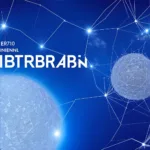
Tokenization is reshaping the landscape of digital assets, as Binance introduces a self-custody Web3 wallet designed for the DeFi ecosystem. This innovative wallet allows users to engage in activities such as staking, lending, and borrowing without the need to remember seed phrases, thanks to its use of multiparty computation (MPC) technology. Although it requires initial setup through the Binance app, the wallet aims to streamline user experience within the DeFi space.
Competitive Dynamics in the Wallet Space
The introduction of Binance’s new wallet is stirring competition in the market, notably with TrustWallet. TrustWallet, with its native token TWT, experienced a decline in value following the launch of Binance’s wallet. This competition highlights the rapidly evolving nature of the blockchain industry and the continuous push for innovation and user-friendly solutions.
HSBC’s Foray into Tokenization
HSBC is also embracing tokenization, setting its sights on a custody service for tokenized securities. Slated for launch in 2024, this service targets institutional clients and complements HSBC’s current offerings in digital asset issuance and tokenized physical gold. However, HSBC’s service will distinguish itself by not involving cryptocurrencies or stablecoins, focusing instead on the broader potential of tokenization for traditional assets.
Grayscale’s Premium on Chainlink Trust
Institutional demand for tokenized assets is further evidenced by the trading activity around Grayscale’s Chainlink Trust. Trading at a 200% premium over spot prices, Grayscale’s investment product (GLNK) demonstrates a significant appetite among institutions for exposure to digital assets like Chainlink’s LINK token. Despite each GLNK share representing just $12 worth of LINK, the price of $39 indicates a strong conviction in the future of tokenization and Chainlink’s role within it.
Investor Focus Shifting to Ether
The digital asset market is witnessing a shift in investor focus from Bitcoin to Ether and other alternative cryptocurrencies. This shift is quantified by the narrowing spread between Deribit’s ETH DVOL and BTC DVOL indices. The change from -11.6 to -0.6 suggests that investors are increasingly interested in the diverse opportunities presented by the Ethereum network and its associated tokenization capabilities.
Tokenization is not just a buzzword but a significant trend that major financial institutions are integrating into their services. As the digital asset industry continues to mature, tokenization offers a bridge between the traditional financial world and the innovative potential of blockchain technology. The growing interest in and development of tokenized services are set to redefine the boundaries of investment, asset management, and financial services.
In conclusion, the digital asset space is rapidly evolving with the advent of tokenization. Binance’s self-custody Web3 wallet and HSBC’s forthcoming custody service for tokenized securities are just two examples of how traditional finance and blockchain technology are merging. The premium on Grayscale’s Chainlink Trust and the shifting investor focus to Ether underscore the growing institutional interest in tokenized assets. As the industry continues to innovate, tokenization remains a key driver of change, transforming how assets are created, managed, and traded.




